#i am obviously aware of colonization but wtf dude
Explore tagged Tumblr posts
Text
A short display of Portuguese Christmas sweets[1]
[1] I don't think "sweets" is the best translation but idk how else to say it, what I mean is "pastries and cakes", basically
Hello! This is very late (but tbh we eat the same stuff on Christmas and New Year's so ig I'm not that late)!!
I wanted to do this because it seems to kinda be in line with my Halloween folklore post and I want to share more stuff with you all! This one I know a little more about because I eat these things every year, but I promise I'll get back into folklore next because that's what interests me most. Please be aware that half of this is from my personal experience and may not be 100% accurate to most other people.
Bolo Rei (trans: King Cake)
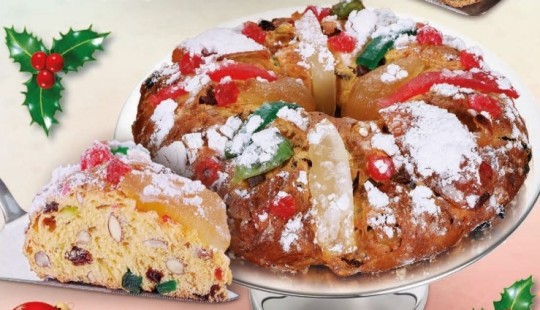
image source: https://lmalimentar.pt/lojaLM/bolos-congelados/318-bolo-rei-cozido-1-kg.html
This is like, the cake people think of when they think of Christmas. It's some basic dough filled with nuts and sugared fruits. Then, it has more sugared fruit on top (I've tried to find exactly what fruit it is but every recipe just says "fruit" despite it always being very specific colours and the only place I could find that listed what it supposedly was said it was pumpkin and I don't believe it). This cake is inspired by the image of a jewel-incrusted crown and was created to honour the Three Magi. It's said that it was inspired by the French Galette de Rois but I've also seen people say it's similar to Italian Panettone.
Bolo Rainha (trans: Queen Cake)
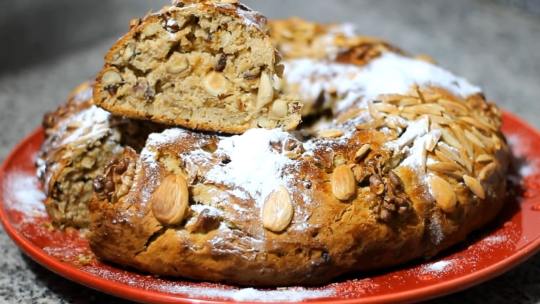
image source: https://www.receitasdeculinaria.tv/receita-do-bolo-rainha/
For the cool kids who don't like the fruit part of Bolo Rei - this one is literally just nuts. This is also supposed to look like a crown but I can't find any source saying what it's supposed to represent, so I think it's just Bolo Rei 2.0. This one wasn't that big of a thing when I was a kid but it's gained a lot of traction in the last 10 or so years.
Pão de Ló (trans: literally "Bread of Ló" / "Ló's Bread", I'll explain in a bit)
There are two versions of this one but I'm gonna talk about dry Pão de Ló first.
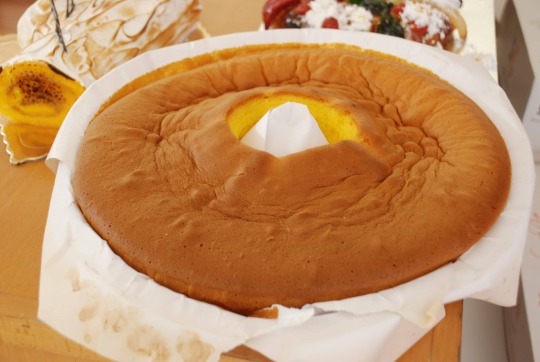
image source: https://www.receitasdatiaceu.com/recipe/pao-de-lo-tradicional/
This is my personal favourite - literally my favourite cake of all time. I have never met someone who does not have this as their favourite Christmas food. This is a type of sponge cake you eat on both Christmas and Easter, although it seems it was originally just for Easter. This is one of those you absolutely can't make at home unless you're literally crazy because it needs to be baked in a clay mould with sheets of paper and I've heard it requires 24 eggs per cake (tbh seems unrealistic but Portuguese pastry is like 80% eggs so it's not that outlandish, and I'm inclined to believe it bc I've tried like 3 different home-made recipes with normal amounts of eggs and it never tasted right). The origin of the name is basically impossible to find because every source I see claims a different story, but "Ló" seems to be the name of its original creator. Also, this cake was brought to Japan during the Discovery Period and it's allegedly the origin of a Japanese sponge cake named Kasutera.
Pão de Ló de Ovar (trans: Pão de Ló from Ovar)

image source: https://iberismos.com/pao-lo-um-doce-com-muita-historia-iberica/?lang=pt-pt
Kinda like regular Pão de Ló but wet on the inside - the liquid-y part is egg. Its origins seem to be in conventual sweets (like, from a convent), which are known for using lots of eggs. But just like with its dry variant, there are a few different stories about it. Sometimes people argue about which variant is better, but it's really not that divisive. In fact, all the foods in this post often coexist at the Christmas table despite some being similar to each other.
Sonhos (trans: Dreams)
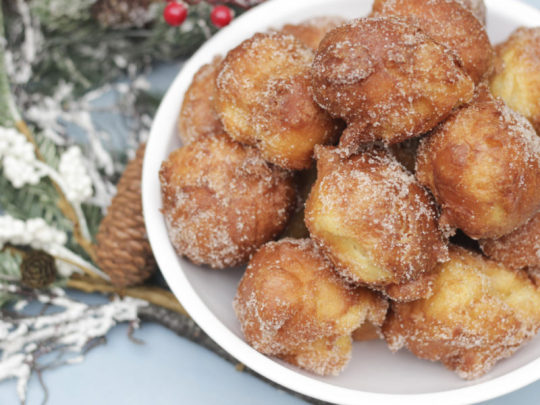
image source: https://claradesousa.pt/receita/sonhos-de-natal/
These are much simpler than the cakes. It's basically just fried dough topped with sugar (I've heard that Brazilians call them "chuvinha" aka "little rain" because of this, and I think that's kinda funny because most Portuguese sweets have sugar on top). This is kinda like a "base" because there are other sweets similar to it but with carrot or pumpkin on the inside, and I don't think there's much reason to get into them here - also I don't usually eat them. You can eat them dry or with syrup made with sugar, cinnamon and lemon/orange.
Rabanadas (no clue how to translate this bc google suggests "french toast" and I refuse to accept that)
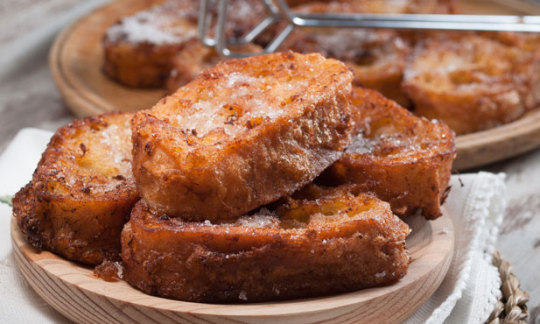
image source: https://www.pingodoce.pt/receitas/rabanadas/
This is a simple yet effective classic. It was originally made to utilize stale bread people had lying around (I've seen sources suggest it's because bread is sacred to Jesus even if it's stale and so it's bad to waste it). It's made with bread, honey or sugar, milk, and cinnamon, although I've seen people replace the milk and honey with condensed milk. It has been recorded since the 16th century, when it was used partially for medicinal purposes to help people regain their strength, especially after giving birth (which... thematically appropriate but it still surprised me when I found out).
I hope you had fun looking at all this tasty food - because I certainly did and this is my blog.
#i may also make a separate post on christmas food#like for dinner#but that's way more straightforward#also if i were to explain the Lore behind it it would involve briefly discussing Portugal's fascist dictatorship#and i don't want that in the post i made because i wanted to tell you about my favourite cake#the pão de ló thing is so real tho#the moment the holiday season ends you immediately start looking forward to Easter when you'll get to eat it again#also about the kasutera thing#it's the second time i've seen japanese sweets inspired by portuguese ones wtf#i am obviously aware of colonization but wtf dude#first pastel de nata and now pão de ló?? they have great taste. no notes.#if i sound like i know a lot about rabanadas it's bc i had to write an essay on them 2 weeks ago#not writing#portugal ramblies#christmas#portuguese cuisine#is that right?? it's the only tag related to it i can find#portuguese food
14 notes
·
View notes